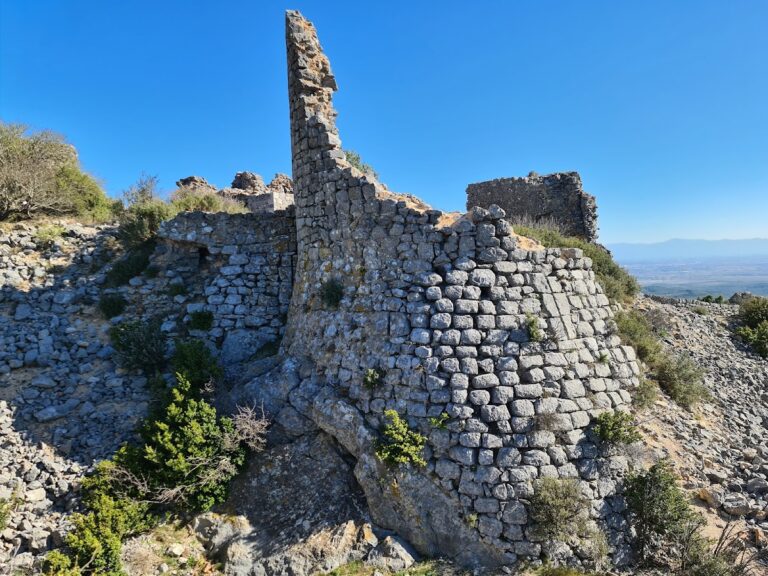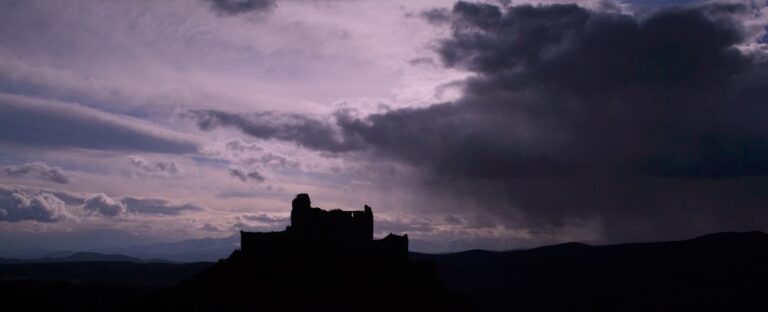Château de Fitou: A Historic Castle in Southern France
Visitor Information
Google Rating: 3.3
Popularity: Very Low
Google Maps: View on Google Maps
Country: France
Civilization: Unclassified
Remains: Military
History
The Château de Fitou stands above the village of Fitou in southern France, overlooking the Leucate ponds and the nearby sea. While the precise origins of the castle are unclear, it is possible that an earlier Roman villa occupied the site, hinting at its long-standing strategic importance in the region.
In a documented will from 990, the Viscountess of Narbonne bequeathed an estate called Fictorius to Ermengaud of Narbonne. This territory encompassed more than 3,000 hectares, extending to the border near Salses. The family that would later be associated with the castle, known as the Perpignan family, held complete seigneurial rights over Fitou. These rights enabled them to grant titles and privileges to their vassals, establishing their authority in the area.
Throughout its history, the castle experienced repeated sieges, damage from fires, and phases of reconstruction. Its fortified position made it a focal point during regional conflicts. After the fall of Montségur and the suppression of the Cathar movement in the 13th century, the Lord of Niort, formerly a follower of the Cathar faith, renounced his heresy and settled at the castle, marking a notable religious and social shift in the site’s history.
In the early 17th century, during the war declared by Cardinal Richelieu against Spain, the castle and the village came under military pressure. On May 19, 1635, Spanish troops advanced on Fitou in two separate forces. Despite the castle’s fortifications, the defenders capitulated, allowing Spanish forces to take control of the village, the surrounding manor known as the Cabannes de Fitou, and the castle itself.
The Aragon family were the final seigneurs to occupy the Château de Fitou until the upheavals of the French Revolution in 1789, which ended their feudal tenure. In the following decades, the castle suffered further devastation. In 1843, it was plundered and set on fire. Official orders later authorized its destruction, after which the ruins were quarried for building materials to support local construction needs.
Efforts to revive the Château de Fitou began in 1972 when private antiquarians, Mr. and Mrs. Gaillot, undertook restoration work to reconstruct the castle approximately. Since then, it has been adapted for various uses, including serving as a nightclub and later as a museum. After its sale in 2015, however, the castle was closed to the public.
Recognizing its historical significance, the French government listed the château as a historic monument in 1948. Moreover, the natural environment surrounding the castle received protection starting in 1942, ensuring the preservation of the landscape that has shaped its story.
Remains
The Château de Fitou occupies an elevated site of around 1,000 square meters, affording clear views over the village, the nearby Leucate ponds, and the sea. Its construction reflects its role as a fortified stronghold, though detailed architectural plans or descriptions remain undocumented. Over time, the castle endured numerous attacks, fires, and periods of neglect, which left it heavily damaged and in ruins by the 19th century.
The physical remains exhibit the scars of repeated burnings and sieges, with much of its original masonry dismantled and repurposed as building stone for the village following a formal directive ordering the castle’s destruction. As a result, the surviving fragments prior to restoration were modest and fragmentary.
Beginning in 1972, restoration efforts by private antiquarians sought to rebuild the castle on an approximate basis. These works aimed to stabilize and partially reconstruct the structure but did not produce detailed replicas of original features or decorative elements. The resulting edifice thus reflects a blend of original remnants and reconstructed parts, emphasizing its historical footprint without precise architectural fidelity.
Throughout its history, the castle’s fortifications were considered substantial enough to warrant attention in military campaigns, notably during the 17th-century Spanish invasion. While specific details of the defensive walls, gates, or towers are not described in the source, their presence was clearly significant in the site’s military role.
Today, the Château de Fitou remains a testament to centuries of conflict, transformation, and renewal—a site where the remains and the surrounding landscape combine to tell the story of its enduring place in the region.







